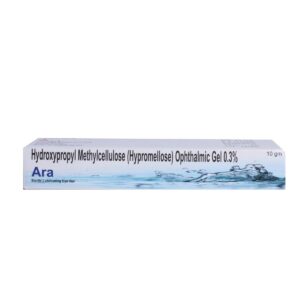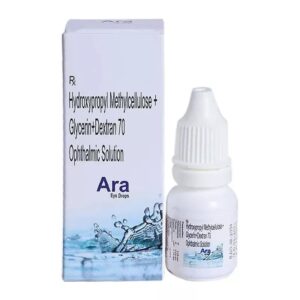DEXTRAN + GLYCERIN + HYDROXY PROPYL METHYL CELLULOSE
Dextran: Dextran is a medication classified as a plasma volume expander, meaning it is used to increase blood volume in certain medical conditions. It is a high molecular weight polymer of glucose, derived from the fermentation of sucrose by the bacteria Leuconostoc mesenteroides.
The main use of dextran is in the treatment of hypovolemia, which is characterized by a decrease in blood volume. Hypovolemia can occur due to conditions like hemorrhage, shock, trauma, or during surgical procedures. Dextran helps to restore blood volume and improve circulation.
The exact mechanism of action of dextran is not completely understood. It is believed to work through its ability to attract and retain water within the blood vessels, thereby increasing blood volume. It also helps to improve blood flow by reducing blood viscosity and improving microcirculation.
Dextran can be administered intravenously, and the dosage depends on the specific indication and the patient’s weight. It is usually given in a controlled healthcare setting under the supervision of a medical professional.
Like any medication, dextran is associated with some side effects. The most common side effects include allergic reactions such as rash, itching, swelling, and difficulty breathing. There have been rare cases of severe allergic reactions known as anaphylaxis, which require immediate medical attention.
Other possible side effects of dextran may include headache, nausea, vomiting, dizziness, and low blood pressure. In some cases, dextran can cause fluid overload, leading to symptoms such as shortness of breath, swelling, and pulmonary edema.
It is important to note that dextran should be used with caution in patients with a history of bleeding disorders or renal impairment, as it can further increase the risk of bleeding or kidney damage.
As with any medication, it is crucial to discuss the risks and benefits of dextran with a healthcare provider before initiating treatment. They can provide personalized guidance and monitor for any potential adverse effects.
Glycerin: Glycerin, also known as glycerol, is a medication that is commonly used for various purposes, including as a laxative and in the treatment of conditions such as dry skin and constipation.
Glycerin works by attracting water into the intestines, which helps to soften the stool and stimulate bowel movements. It is classified as an osmotic laxative because it increases the osmotic pressure in the intestines, leading to an increase in water content and ultimately promoting bowel activity.
For constipation, glycerin can be administered rectally as a suppository. The usual recommended dose for adults is one suppository inserted into the rectum as needed. It is important to follow the instructions provided by your healthcare professional or as mentioned on the packaging.
While glycerin is generally considered safe for short-term use, it may have some side effects. These can include rectal irritation, mild abdominal discomfort, cramping, and diarrhea. Allergic reactions to glycerin are rare but can occur, so it is important to seek medical attention if you experience any signs of an allergic reaction such as rash, itching, swelling, dizziness, or difficulty breathing.
It is essential to consult with a healthcare professional before using glycerin, particularly if you have any pre-existing medical conditions or are taking other medications. They can provide guidance on the appropriate use of glycerin and help determine if it is suitable for your specific situation.
Hydroxy Propyl Methyl Cellulose: Hydroxy Propyl Methyl Cellulose (HPMC) is a medication that belongs to a class of drugs known as artificial tears. It is commonly used to relieve dryness and irritation of the eyes caused by conditions such as dry eye syndrome or environmental factors like wind or smoke.
HPMC works by forming a thin protective film over the surface of the eyes, providing lubrication and retaining moisture. This helps to relieve symptoms such as itching, burning, redness, and foreign body sensation.
The recommended dose of HPMC eye drops may vary depending on the severity of dry eye symptoms and individual patient needs. Typically, one or two drops are instilled into the affected eye(s) as needed, usually 3 to 4 times a day. It is important to follow the instructions provided by your healthcare provider or the medication packaging.
Side effects associated with HPMC eye drops are generally rare and mild. Some potential side effects may include temporary stinging or burning sensation in the eyes, blurred vision, mild itching, and increased sensitivity to light. These side effects are usually temporary and resolve on their own. However, if you experience persistent or severe side effects, it is important to contact your healthcare provider.
It is worth noting that HPMC eye drops are generally safe, but it is important to inform your healthcare provider about any existing medical conditions or allergies you may have, as well as any other medications or supplements you are taking. They can provide personalized recommendations and ensure there are no potential interactions or contraindications.


